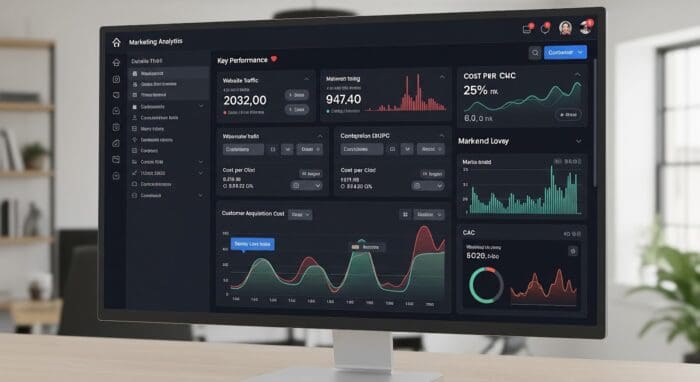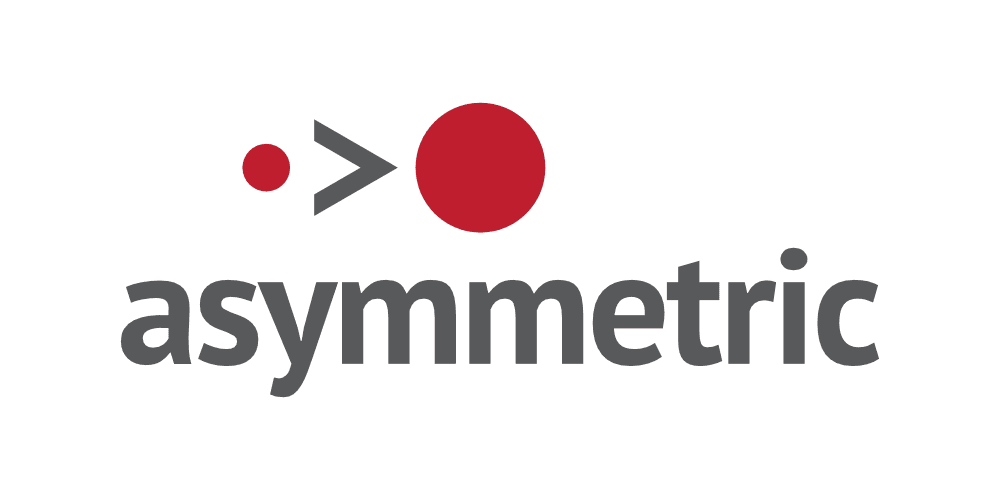In the dynamic and often overwhelming world of digital marketing, knowing precisely where to invest your hard-earned marketing budget can feel like a high-stakes guessing game. Should you pour more marketing dollars into Pay-Per-Click (PPC) campaigns for immediate results, cultivate long-term organic growth with Search Engine Optimization (SEO), or build vibrant communities and drive awareness through social media marketing? The truth is, there’s no singular, one-size-fits-all answer to this crucial question. The most effective approach to marketing budget allocation hinges on rigorous campaign performance analysis and a nimble, data-driven digital marketing budget strategy.
Understanding the average marketing spend within your industry is essential for benchmarking your marketing budget, ensuring your strategy remains competitive and aligned with industry standards.
This comprehensive guide will demystify the perennial PPC vs. SEO vs. social media debate. It will show you how to budget for digital marketing effectively by constantly evaluating what’s working, what’s not, and where your marketing spend can generate the highest return. By focusing intently on marketing performance and the quantifiable impact of your marketing efforts, you can ensure every dollar spent contributes directly to your overarching business goals and propels you towards sustainable growth.
The Three Pillars of Digital Marketing: PPC, SEO, and Social Media

Before exploring budget allocation strategies, let’s examine these three fundamental digital channels and their unique roles in modern marketing strategies.
- PPC (Pay-Per-Click): This is a form of paid advertising where you pay a fee each time your ad is clicked. Online ads are a key component of a multi-channel marketing strategy, contributing to immediate conversions, long-term brand awareness, and lead generation. Prominent examples include Google Ads, Bing Ads, and social media ads on platforms like Facebook, Instagram, LinkedIn, and TikTok. PPC offers immediate visibility, placing your offerings before active searchers or targeted audiences. It’s highly measurable, providing granular control over your ad spend and precise data on customer acquisition cost (CAC). PPC is an excellent tool for driving quick website traffic, generating leads, promoting specific offers, or testing new products. It offers rapid feedback, making it ideal for immediate lead generation and adapting quickly to industry trends.
- SEO (Search Engine Optimization): This involves optimizing your website and its content to rank higher in organic (non-paid) search engine results. SEO is fundamentally a long-term marketing investment focused on building online authority, credibility, and attracting consistent, cost-effective organic traffic. While it doesn’t involve direct per-click costs, it requires a significant investment in content marketing (blogs, articles, guides, video ads for YouTube SEO), technical optimization (website speed, mobile-friendliness), and strategic link building. SEO builds an invaluable digital asset for your business that generates traffic long after the initial marketing expenses.
- Social Media Marketing: This encompasses organic social media efforts (building a community, fostering customer loyalty, sharing valuable content, engaging with followers) and paid social ads. Social media platforms are invaluable for raising brand awareness, nurturing leads, and building direct relationships with your audience. Social media ads offer exact audience targeting based on demographics, interests, and behaviors, making them powerful for reaching specific potential customers. Influencer marketing often falls under this umbrella, leveraging trusted voices to amplify your message. Social media marketing aims to create a strong brand presence and drive engagement within a relevant community.
Each marketing channel plays a vital yet distinct role in a truly comprehensive digital marketing budget strategy. The key is understanding their strengths and weaknesses regarding your specific marketing objectives and then allocating resources accordingly based on continuous campaign performance analysis.
Why Campaign Performance Analysis is Your Budgeting Compass

In the contemporary digital landscape, a marketing budget should never be static. Data-driven strategies are paramount. To truly optimize your marketing budget allocation, you must continuously analyze the campaign performance of your various marketing initiatives. This means moving beyond gut feelings and embracing complex data:
- Tracking Key Performance Indicators (KPIs): Beyond superficial metrics like impressions or likes, focus on KPIs directly related to your overarching business goals.
- For PPC campaigns: Monitor Cost Per Click (CPC), Customer Acquisition Cost (CAC), Return on Ad Spend (ROAS), and Conversion Rate. These metrics directly impact your ad spend efficiency and the profitability of your paid advertising.
- For SEO efforts: Track Organic Traffic volume, Keyword Rankings for your target terms, Organic Conversions, Bounce Rate (indicating content relevance), and Time on Page (reflecting engagement). Tools like Google Analytics are indispensable here.
- For Social Media Marketing: Measure Engagement Rate (likes, comments, shares, saves), Reach, Website Clicks from social media, and Lead Generation (for social media ads). For organic efforts, focus on community growth and sentiment.
- Understanding Attribution Modeling: It is critical to understand which touchpoints in your sales funnel truly contribute to conversions. Is it the first exposure to an online ad, the last organic search click, or a combination of social media engagement and a retargeting display ads campaign? Multi-touch attribution models provide a more accurate and holistic picture than simple last-click attribution, giving you more valuable insights into how your marketing dollars perform across multiple marketing channels.
- Regular Reporting and Review: Don’t just collect data; analyze it with discipline and consistency. Set up dashboards that give you a clear, real-time view of your campaign performance. Weekly or bi-weekly reviews are essential for making agile adjustments to your marketing strategy and reallocating marketing spend to avoid excess and unnecessary costs.
By meticulously analyzing these metrics and leveraging analytics tools, you gain valuable insights into which marketing channels and individual marketing campaigns deliver the best ROI for your business. Incorporating predictive analytics allows you to forecast campaign performance, refine targeting, and optimize budget allocation, ultimately enhancing ROI and improving budget efficiency. This data becomes the bedrock for intelligent, performance-driven marketing budget allocation.
How to Budget for Digital Marketing Based on Performance: A Strategic Blueprint

Now, let's transition from analysis to actionable steps for creating a performance-driven digital marketing budget strategy that optimizes your marketing spend.
1. Define Clear, Measurable Marketing Objectives
Before allocating a single dollar, you must have clear, SMART (Specific, Measurable, Achievable, Relevant, Time-bound) marketing objectives. Are you aiming to:
- Increase online sales by 20% in the next quarter?
- Generate 500 qualified leads per month at a specific customer acquisition cost?
- Raise brand awareness by X% among a particular demographic?
- Improve customer lifetime value (CLTV) by 10%?
Your marketing objectives will directly dictate which marketing channels are most appropriate and how much of your total marketing budget you should realistically spend. For instance, if immediate sales and lead generation are the priority, a heavier ad budget and investment in PPC campaigns might be justified. If long-term brand authority and organic visibility are key, SEO and content marketing will demand a more significant portion of your marketing budget.
2. Evaluate Past Performance and Current Industry Trends
Look rigorously at your historical data. Which marketing efforts consistently delivered a strong ROAS? Which SEO efforts led to sustainable growth in organic traffic and conversions? Understanding what has worked (and what hasn't) in the past is an invaluable asset for future marketing budget allocation.
Additionally, stay abreast of current industry trends and competitive landscapes. Are new social media platforms gaining traction? Are Google algorithm updates fundamentally changing SEO dynamics? Is the advertising cost on specific advertising channels increasing due to heightened competition? Is email marketing becoming more or less effective for your industry? Adapting to these shifts is critical to a robust digital marketing budget strategy. For small business owners, staying agile is especially important.
3. Allocate Your Marketing Budget Based on ROI and Business Impact
This is the very core of performance-based budgeting. Instead of rigid, fixed percentages, your marketing budget should be fluid and adaptable, designed to maximize positive ROI.
- Invest More in What's Working: If your PPC campaigns on Google Ads or social media ads consistently generate high-quality leads at a low customer acquisition cost, don't hesitate to allocate funds and double down! Reallocate marketing dollars from underperforming or less effective marketing channels to those proving their worth. This applies equally to SEO efforts – if a particular content cluster is driving significant organic traffic and conversions, invest in similar content marketing initiatives.
- Test New Channels and Strategies Prudently: Don't put all your marketing investments in one basket. Allocate a measured portion (e.g., 10-20%) of your marketing budget for experimentation. This could involve testing a new social media platform, exploring video ads on YouTube, investing in local SEO if it's a new focus, or trying new forms of digital advertising like native ads. Even if a test doesn't yield immediate stellar results, the valuable insights gained are crucial for future marketing budget allocation and understanding what to avoid, preventing excess and unnecessary costs.
- Optimize Underperforming Campaigns Before Cutting: Rather than immediately cutting marketing spend from struggling marketing campaigns, analyze why they're underperforming. Is it poor audience targeting? Irrelevant keywords? Weak ad copy? A flawed landing page design? By optimizing these elements, you can turn a struggling campaign into a success. Only if, after diligent optimization, campaign performance remains low, should you consider reallocating the marketing budget. This applies to all digital marketing activities, from website development to email marketing.
4. Balance Short-Term Gains with Long-Term Growth
The PPC vs SEO vs social media debate often boils down to balancing immediate results with sustainable growth. A reasonable marketing budget considers both.
- PPC delivers immediate visibility and quick results, making it ideal for quick wins, promotions, or capitalizing on seasonal demand. However, the traffic stops when you stop paying for paid media.
- SEO takes time to build momentum (often 6-12 months for significant results), but it provides sustainable, cost-effective organic traffic without continuous per-click costs once established. It's akin to building a valuable, compounding asset for your business.
- Social Media can offer a blend. Social ads provide immediate reach and targeted visibility, while organic social media marketing builds a loyal community, fosters customer loyalty, and cultivates long-term brand equity over time.
A balanced approach often involves a significant upfront marketing investment in PPC for immediate impact and lead generation, while simultaneously building out your SEO foundation and content marketing for long-term sustainability. Social media marketing can then augment both, driving engagement and brand loyalty, and providing valuable insights into industry trends for future marketing efforts. Your total marketing budget should reflect this strategic balance, especially for small business owners looking for sustainable growth. For companies in a growth stage, a higher percentage of company revenue might be allocated to marketing (e.g., 15-20% or more of projected revenue) to capture market share. The average marketing budget can vary widely by industry and growth stage.
5. Consider the Customer Journey and Sales Funnel
Map your customer's journey from initial awareness to final purchase and post-purchase engagement. Different marketing channels and marketing tactics excel at various stages of the sales funnel:
- Awareness: Social media ads, display ads, content marketing on broad topics (SEO), influencer marketing, and even traditional advertising can raise brand awareness.
- Consideration: Targeted PPC campaigns, in-depth blog posts (SEO), email marketing nurturing sequences, and retargeting paid media campaigns.
- Decision: Particular PPC ads (e.g., product-specific Google Ads), optimized product pages (SEO), direct response social ads, and personalized email marketing offers.
Align your marketing budget with the marketing channels that best serve each stage of your unique customer journey, optimizing your customer acquisition process.
Common Challenges in Digital Marketing Budgeting
Marketing budgeting in the digital age comes with unique challenges that can make or break your marketing strategy. One of the most significant hurdles is allocating your marketing spend effectively across various channels. With options ranging from traditional advertising to digital marketing efforts like PPC, SEO, and social media marketing, it’s easy to feel overwhelmed by the choices.
Another common challenge is accurately measuring the ROI of your marketing campaigns. With so many touchpoints and attribution models, understanding which marketing efforts are truly driving sustainable growth and achieving your business goals can be complex. Businesses must also navigate the rapid evolution of digital marketing trends and technologies, which can quickly render yesterday’s best practices obsolete.
Another critical consideration is balancing your marketing budget between brand awareness initiatives and performance-driven campaigns. While focusing all your marketing dollars on channels that deliver immediate results is tempting, long-term brand building is essential for sustainable growth. Ultimately, successful budget allocation requires ongoing analysis, flexibility, and a willingness to adapt your marketing strategy as your business goals and the digital landscape evolve.
Common Mistakes to Avoid When Allocating Your Marketing Budget
Allocating your marketing budget effectively is crucial, but many businesses fall into common traps that can undermine their marketing efforts. One frequent mistake is neglecting to set clear, measurable marketing objectives. Without defined goals, marketing campaigns can lack focus, making it difficult to assess success or justify marketing spend.
Another pitfall is failing to review and adjust your marketing budget regularly. As business goals shift and industry trends evolve, your marketing strategy and budget allocation should adapt accordingly. Sticking to a static budget can lead to missed opportunities or wasted resources.
Another common error is spreading your marketing budget too thin across too many marketing channels. While diversification is important, trying to do too much at once can dilute your impact and make it harder to achieve meaningful results. Instead, prioritize the channels that best align with your business goals and customer acquisition strategy.
Finally, don’t underestimate the power of digital marketing channels like social media and Google Ads. These platforms are often highly effective for customer acquisition and raising brand awareness, especially compared to traditional marketing efforts. You can ensure your marketing budget delivers maximum value by avoiding these mistakes and staying focused on your marketing objectives.
Essential Marketing Budget Tools for Smarter Allocation

Maximizing the impact of your marketing budget starts with leveraging the right tools to inform your decisions and optimize your marketing efforts. Marketing automation platforms are invaluable for streamlining marketing activities, nurturing leads, and providing valuable insights into campaign performance. These tools help you manage complex marketing campaigns more efficiently and ensure your marketing dollars are used effectively.
Analytics tools, such as Google Analytics, are essential for tracking key metrics, measuring your marketing campaigns' ROI, and identifying improvement areas. With real-time data and customizable dashboards, you can make informed decisions about budget allocation and quickly adjust your strategy based on campaign performance.
Social media tools also play a critical role in managing your presence across multiple platforms, scheduling content, and engaging with your audience. These tools allow you to monitor engagement, track the effectiveness of your social media campaigns, and optimize your marketing activities for better results.
By integrating marketing automation, analytics, and social media tools into your workflow, you can gain valuable insights needed to make smarter, data-driven decisions about your marketing budget allocation and drive continuous improvement in your marketing efforts.
Tailoring Your Budget: SaaS Companies vs. Small Businesses

Marketing Budget Considerations for SaaS Companies
SaaS companies face unique challenges and opportunities when it comes to marketing budgeting. Given the competitive nature of the SaaS landscape, a significant portion of the marketing budget often goes toward digital advertising channels such as Google Ads and social media ads to drive rapid customer acquisition and revenue growth. These paid channels are essential for reaching target audiences at scale and generating qualified leads.
In addition to paid advertising, SaaS companies must invest in content marketing and marketing automation to nurture leads through the sales funnel and build brand awareness over time. Creating high-value content and leveraging automation tools helps maintain engagement and move prospects toward conversion.
Measuring key metrics like customer acquisition cost (CAC) and customer lifetime value (CLTV) is critical for SaaS businesses. By closely monitoring these figures, SaaS companies can ensure their marketing efforts generate a positive ROI and make informed decisions about future budget allocation. Focusing on these key metrics allows SaaS companies to optimize their marketing spend, build brand awareness, and achieve sustainable growth.
Marketing Budget Strategies for Small Businesses
Small businesses typically operate with more limited marketing budgets, making strategic allocation of funds even more critical. One of the most effective strategies is to prioritize building a strong online presence through website development and search engine optimization (SEO). These foundational marketing channels can deliver long-term value and help small businesses compete with larger players.
Leveraging social media platforms and email marketing is also crucial for small businesses looking to engage their target audience and drive sales without a significant investment. Small companies can maximize their marketing budgets and achieve meaningful results by focusing on these cost-effective marketing tactics.
Small businesses must regularly review and adjust their marketing budgets to ensure their marketing efforts remain aligned with business goals and responsive to industry trends. Small businesses can lay the groundwork for long-term growth and continued success by staying agile and prioritizing the most impactful marketing channels.
Beyond the Basics: Advanced Digital Marketing Budget Strategy
- Leverage Marketing Automation and Analytics Tools: Investing in robust analytics tools and marketing automation platforms is crucial for accurate campaign performance analysis. Tools like Google Analytics provide granular data, while marketing automation streamlines processes and tracks customer lifetime value. This makes leveraging tools a key part of smart marketing investments.
- Dynamic Budget Adjustment: Your marketing budget should never be rigid. Implement a system for monthly or quarterly review and adjustment based on campaign performance. If a market opportunity arises, industry trends shift significantly, or a competitor launches an aggressive campaign, you need the flexibility to move your ad spend and allocate funds quickly. This prevents excess and unnecessary costs.
- Competitor Analysis: While you shouldn't unthinkingly copy competitors, understanding their marketing spend and activities can offer valuable insights. Are they dominating a specific keyword with PPC campaigns? Are they investing heavily in content marketing or social media marketing? This can inform your budget allocation decisions and help you identify gaps or opportunities in your marketing efforts.
- Focus on Customer Lifetime Value (CLTV): When evaluating your customer acquisition cost, always consider the lifetime value of a customer. A higher initial CAC might be acceptable if the customer lifetime value is also high. This perspective shifts the focus from immediate transaction costs to long-term profitability.
Unlock Your Marketing Potential with Asymmetric Applications
Developing and executing a successful digital marketing budget strategy that drives positive ROI can be complex and time-consuming. It requires deep expertise in the interplay between PPC vs SEO vs social media, constant campaign performance analysis, and the ability to pivot quickly based on real-time data. For small business owners juggling many responsibilities, this can be particularly challenging.
At Asymmetric Applications, we specialize in helping businesses like yours optimize their marketing budget allocation for maximum impact. We don't just run individual marketing campaigns; we become an extension of your team, providing:
- Holistic Digital Marketing Strategy: We analyze your entire online presence and business goals to develop a cohesive digital marketing budget strategy that intelligently integrates paid media (PPC, social ads, display ads), SEO, social media marketing, email marketing, and other digital marketing activities for synergistic growth. We help you define realistic marketing priorities.
- In-Depth Campaign Performance Analysis: Our experts dive deep into your data, identifying opportunities for optimization, reducing excess and unnecessary costs, and ensuring your ad spend is always working efficiently to achieve your marketing objectives. We help you understand the true ROI of your marketing investments.
- Agile Budget Management: We implement dynamic, budget-based models for your marketing spend, allowing real-time adjustments based on campaign performance and market shifts. This ensures your marketing budget is always allocated to the most impactful areas, allowing you to adjust strategies proactively.
- Expert Execution and Optimization: From fine-tuning Google Ads to developing robust content marketing strategies and engaging social media initiatives using the latest social media tools, our team handles the execution and continuous optimization, freeing you to focus on your core business. We ensure your marketing efforts are consistently aligned with your business goals.
Don't let guesswork or outdated assumptions dictate your digital marketing budget. Partner with Asymmetric Applications to build a performance-driven marketing strategy that delivers measurable results and propels your business to new heights. Stop spending money inefficiently and start investing wisely for sustainable growth.

Frequently Asked Questions (FAQs) About Digital Marketing Budget Strategy
How do I know whether to invest more in PPC, SEO, or social media marketing?
The best channel depends on your specific business goals. PPC is ideal for quick wins and lead generation, SEO builds long-term organic growth, and social media drives engagement and awareness. Use campaign performance metrics (like ROAS, CAC, and engagement rate) to identify which channel delivers the highest ROI for your business.
What's a reasonable starting marketing budget for a small business?
Many small businesses allocate 7–10% of total revenue to marketing, but if you're in growth mode or launching a new product, it can rise to 15–20%. Prioritize cost-effective channels like SEO and social media while reserving a portion of your budget for testing PPC campaigns or new platforms.
How often should I adjust my digital marketing budget?
Marketing budgets should be reviewed monthly or quarterly, depending on your campaign cycle. If performance data shows a channel is underperforming or a new opportunity arises, reallocate funds promptly to avoid wasted spend and optimize ROI.
What KPIs should I track to measure marketing budget effectiveness?
Key performance indicators (KPIs) vary by channel, but essential ones include:
- PPC: ROAS, CAC, Conversion Rate
- SEO: Organic Traffic, Keyword Rankings, Time on Page
- Social: Engagement Rate, Click-Through Rate, Follower Growth
Tie each KPI to a business goal to ensure your budget supports outcomes, not just activity.
Can I run effective digital marketing campaigns on a limited budget?
Absolutely. With a limited budget, focus on high-impact, low-cost strategies like SEO, email marketing, and organic social media. Use PPC in a targeted way (retargeting or branded keywords), and prioritize data analysis to refine your efforts continually. Even a modest, well-strategized budget can drive meaningful results.

Ready to Revolutionize Your Digital Marketing Budget Strategy?
Transform your marketing spend with a data-driven approach to budget allocation. Whether you aim to maximize ROI, enhance campaign performance, or achieve sustainable growth, our expert team at Asymmetric Marketing is here to guide you.
Get Started Today:
📅 Schedule a Consultation: Explore tailored digital marketing budget strategies for your business. Book Now
📚 Learn More: Discover advanced budgeting techniques to optimize your marketing efforts. Explore More
Take the next step towards smarter marketing investments. Let's amplify your business growth potential together!
Mark Hope
Partner, Asymmetric Marketing
📧 mark.hope@asymmetric.pro
📞 (608) 410-4450
About the author
Mark A. Hope is the co-founder and Partner at Asymmetric Marketing, an innovative agency dedicated to creating high-performance sales and marketing systems, campaigns, processes, and strategies tailored for small businesses. With extensive experience spanning various industries, Asymmetric Marketing excels in delivering customized solutions that drive growth and success. If you’re looking to implement the strategies discussed in this article or need expert guidance on enhancing your marketing efforts, Mark is here to help. Contact him at 608-410-4450 or via email at mark.hope@asymmetric.pro.

